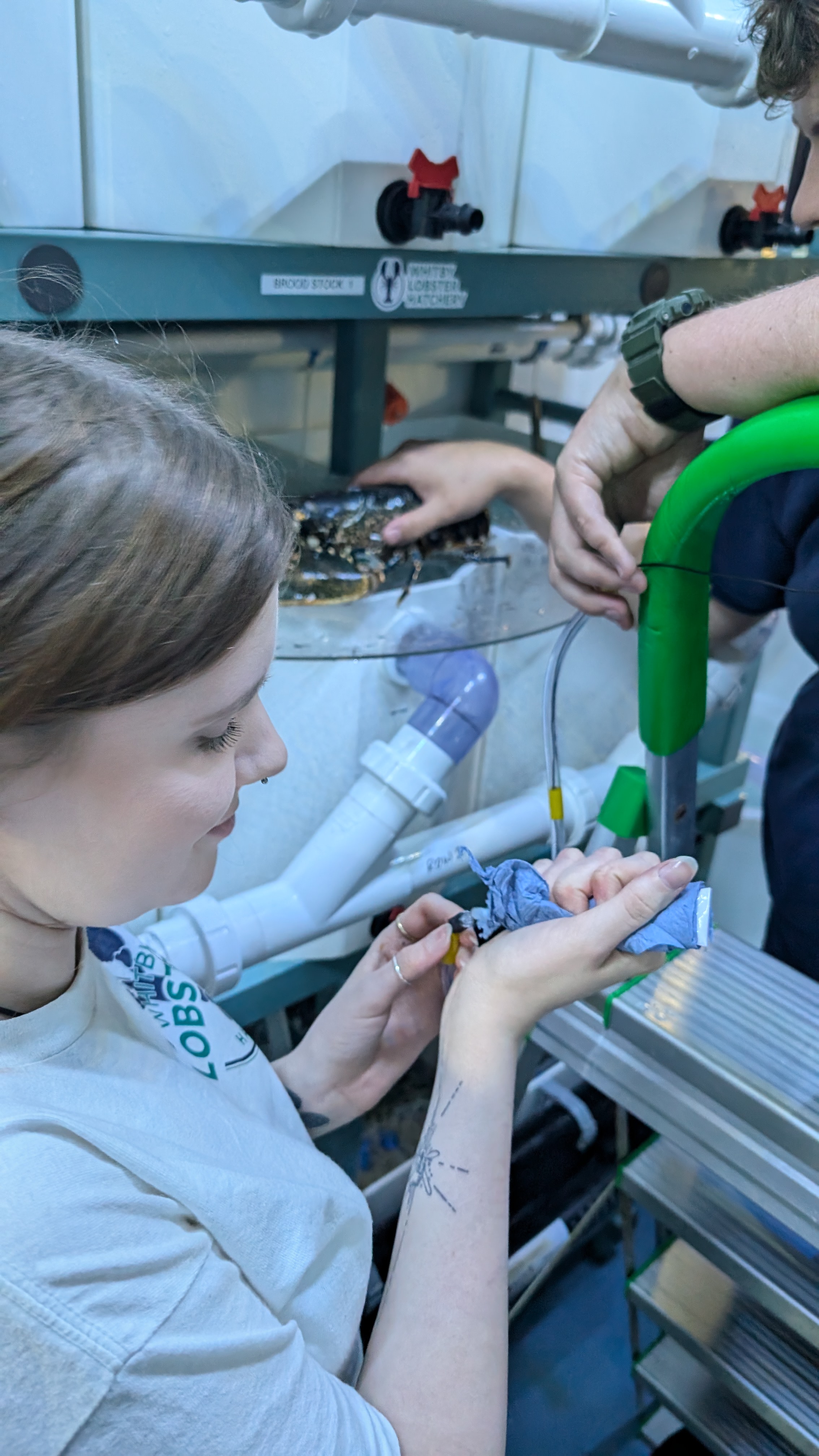Adopt a lobster adopt now
Newcastle Uni Marine Biologist Student Tia has returned to the hatchery to conduct some fascinating research to improve the health and welfare of our lobsters.
Tracking Lobster Heart Rates to Reduce Stress: A Research Project at Whitby Lobster Hatchery
At Whitby Lobster Hatchery, research is underway to improve the welfare of female lobsters, or "hens," in captivity. Tia, a student conducting her dissertation, has returned to the hatchery to study an aspect of lobster health not often discussed: heart rate. By tracking the heart rates of hens during different handling and husbandry procedures, she hopes to identify sources of stress and find ways to reduce it.
The Importance of Studying Lobster Heart Rates
Like many animals, lobsters can experience stress in captivity, which may affect their overall well-being. Prolonged stress can negatively impact their health, immune system, and ability to thrive. Understanding how lobsters react physiologically to their environment could lead to better practices in lobster care, ensuring healthier, more resilient populations in both hatcheries and the wild.
Tia explains her approach: “I am using this data to identify the measures of stress the hens may face whilst in captivity, to see how this can be reduced in the future, improving the welfare of hens!”
How the Research is Conducted
To gather the data, Tia attaches infrared sensor probes to the back of each hen’s carapace, the hard shell covering the body, directly above the heart. These sensors are connected to a heart rate monitor that provides real-time readings of the lobster’s heart activity.
“I collected this heart rate data by attaching infrared sensor probes to the back of the carapace of the hens, just above where the heart will be,” she shares. “These sensors are connected to a heart rate monitor, where I then can use the data to make graphs detailing the heart rate of the hens during handling and husbandry procedures.”
By analysing the heart rate patterns of lobsters, Tia is working to pinpoint when stress levels peak, whether during routine handling or other practices like transferring the lobsters between tanks. The resulting data will be graphed and compared to determine which procedures cause the most stress.

Looking Ahead: Improving Lobster Welfare
The ultimate aim of this research is to create strategies that reduce stress for hens in captivity. As heart rate can serve as a reliable indicator of stress, understanding these patterns could lead to significant improvements in how lobsters are handled in hatcheries. This, in turn, could contribute to better survival rates, healthier populations, and enhanced conservation efforts.
By shedding light on the physiological responses of these animals, Tia’s research is paving the way for more humane and effective care practices. This project highlights the potential to balance necessary human interaction with the well-being of captive lobsters, ensuring that they remain as healthy and stress-free as possible.

Become a
Lobster Buddy
Like What You See?
Our Supporters
Contact Details
Whitby Lobster Hatchery,
Pier Road,
Whitby,
North Yorkshire,
YO21 3PU,
United Kingdom
© 2025 by Whitby Lobster Hatchery. All Rights Reserved. Registered Charity 1193944
Designed by Fitzpatrick Design / Developed by Askew Brook